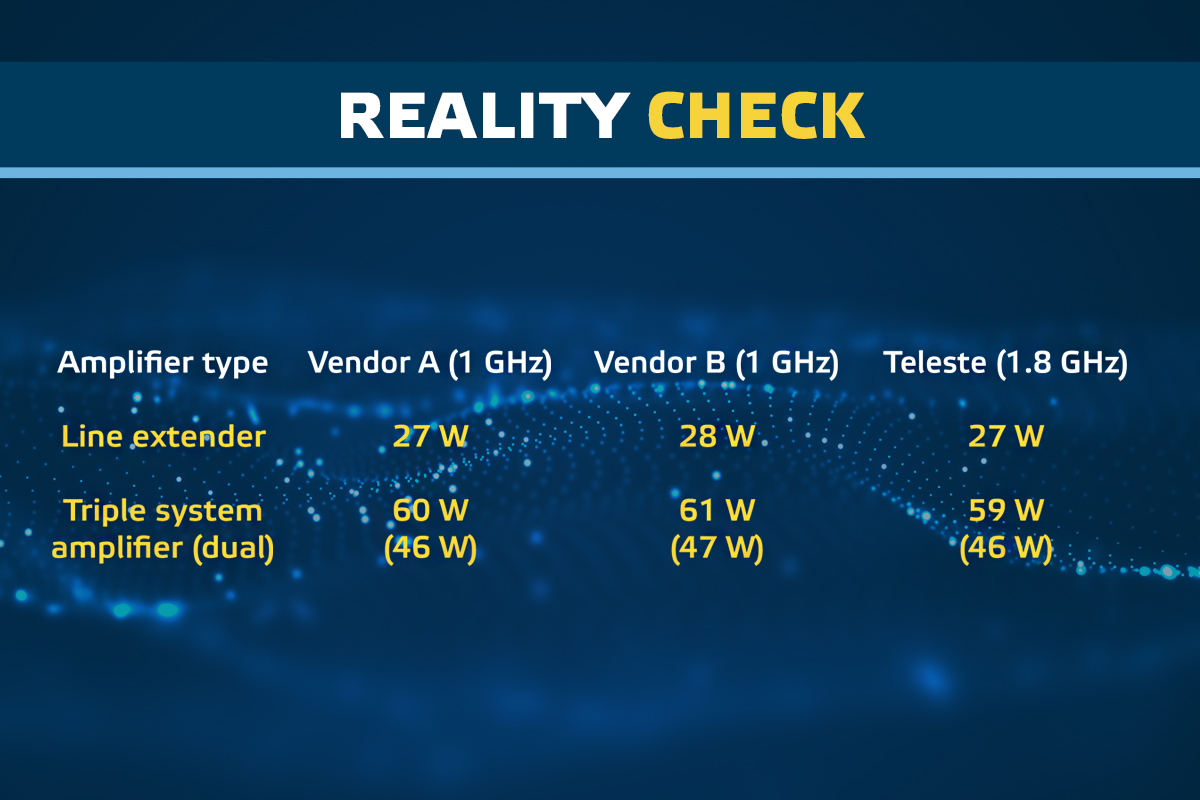With the cable industry’s 10G vision rapidly becoming a reality, now is a great time to consider what steps operators can take today to prepare their networks for the 1.8 GHz upgrades.
With the cable industry’s 10G vision rapidly becoming a reality, now is a great time to consider what steps operators can take today to prepare their networks for the 1.8 GHz upgrades.
This involves not only deploying new actives and passives and transitioning to a distributed access architecture, but also assessing whether the other cable infrastructure components can support the 1.8 GHz amplifiers. For example, operators need to consider whether the new amplifiers consume more energy and whether their current network power supplies are adequate or require replacement.
I had a fantastic opportunity to delve deeper into the power consumption of 1.8 GHz amplifiers with Teleste’s experts. Overall, it’s safe to say that this is a complex topic, and actual voltages and currents can be challenging to model and measure accurately. Nonetheless, we accepted the challenge of determining whether deploying 1.8 GHz amplifiers in the outside plant would cause an operator’s electricity bill to spiral out of control.
You can find more details on our measurements on Teleste website, but in brief, our main discovery is this: when selecting the right components, 1.8 GHz amplifiers consume no more power than their 1 GHz equivalents.
Steve Condra discusses power consumption in 1.8 GHz networks with BTR editorial director Stephen Hardy and counters some of the myths that have grown up around 1.8-GHz amplifiers, particularly concerning power requirements.
Thanks to technical advances in power efficiency, individual amplifiers can maintain power parity while delivering increased bandwidth up to 1.8 GHz. Interestingly, we also determined that upgrading a 1.0 GHz system without power factor correction (PFC) to a 1.8 GHz system with PFC can even result in energy savings. As a result:
- You can achieve significant RF performance improvements with the same power consumption
- Your electric bill won’t go up
- There’s no need to buy new network power supplies due to the 1.8 GHz amplifiers
- Using existing power supplies makes your 1.8 GHz rollout significantly easier and more cost-effective

Comparison of Power Consumption between Legacy Amplifiers and New 1.8 GHz Amplifiers
The 1.8 GHz technology is rapidly developing, and our findings should be of interest to every operator pushing for a transition to 1.8 GHz networks. This technology is proving its potential as an investment opportunity for operators seeking to provide high-quality broadband services to their subscribers.
About the author
Steve Condra, Director, Engineering and Product Management of Teleste Intercept
Steve Condra has more than 30 years of experience in the Telecommunication industry. He spent 16 years with AT&T, Bell Labs, and Lucent Technologies primarily in outside plant design, manufacture, and installation. In addition, he spent 18 years in the Cable TV industry with Scientific Atlanta, Cisco, and Teleste primarily in HFC infrastructure including R&D and Product Management. Steve earned a Bachelor’s and Master’s degree in Mechanical Engineering from the University of Missouri.






